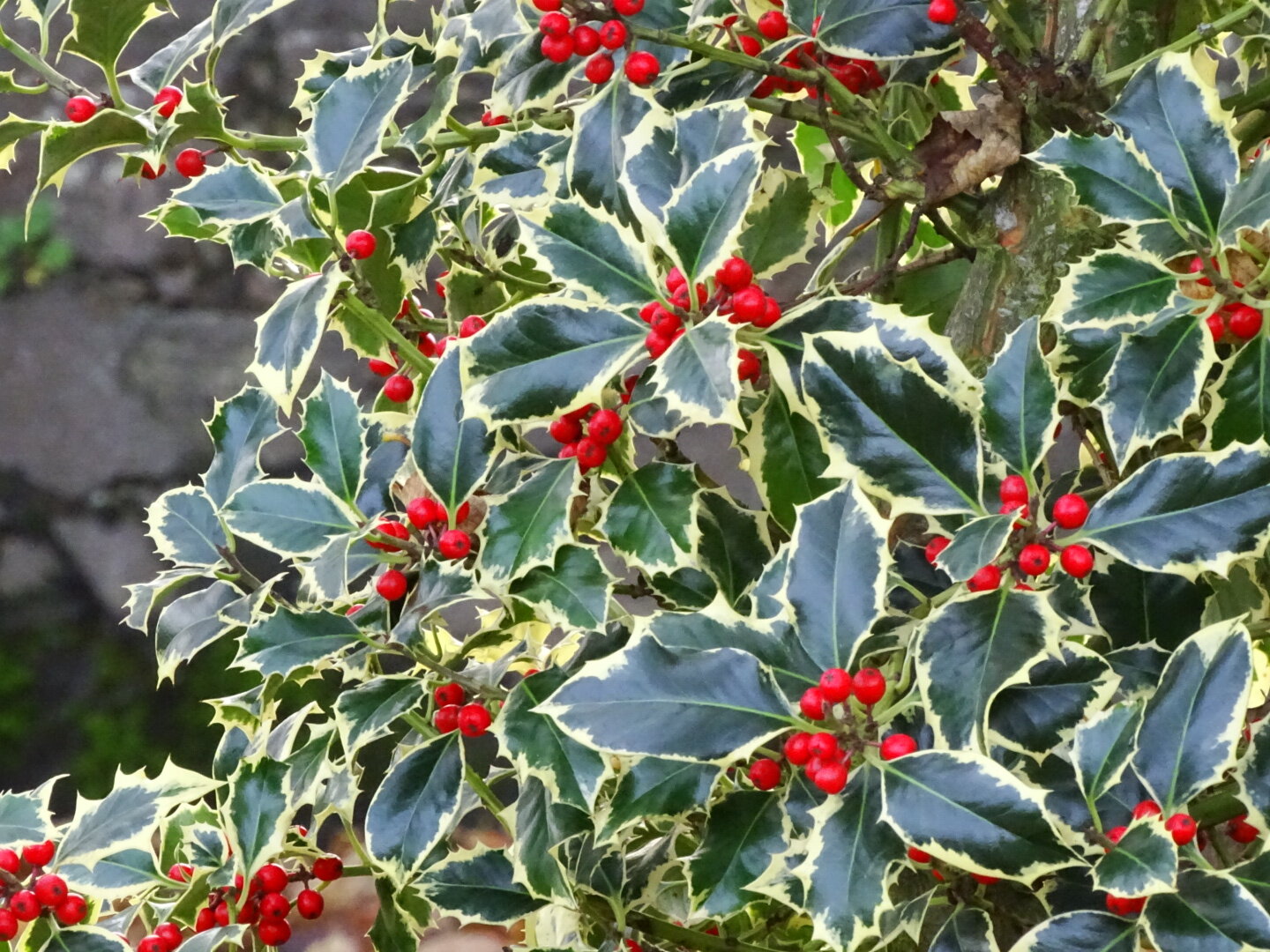We all know the song but do we really know that much about the plants themselves? With over 400 species, you can find holly pretty much everywhere but did you know that only the female plant has the red berries? The males and females need to be near each other to pollenate and produce the berries so if you see a bush without berries it could be a male or a female that just isn’t close enough to a male.
The lower leaves are jaggy to fend off potential nibblers like sheep or cattle or deer. The higher up the plant you go, the less sharp the leaves need to be. The leaves are enjoyed by some insects like leaf miners but in comparison to most other plants, very few insects can deal with the waxy consistency.
The berries are eaten by birds like the Mistle thrush and Blackbird but mainly at the end of the winter period when there are less toxins in them. Even then, the birds only take a few at a time.
Of course, the holly is associated with many myths and legends... Thought to ward off evil and witches, they were brought into homes in winter and even allowed to grow up through existing hedges. This is because witches, who are said to enjoy running over the tops of hedges, would cut their feet on their leaves. It is still thought to be back luck to cut down a holly tree, so caw canny.
Other myths link holly with the crown of Jesus on the cross and some say that you can even make predictions about who will rule the roost. If the holly brought into the house at Christmas is smooth it is said that the woman of the house will be in charge the following year. If prickly, the man. Mmm...? That seems a bit weighted in favour of us blokes. Might be best to have a bit of both for a harmonious home.
Some actually think bringing holly inside is bad luck all together but if you do, don’t throw it out until the eve of epiphany (5th of January), then you should be ok.

